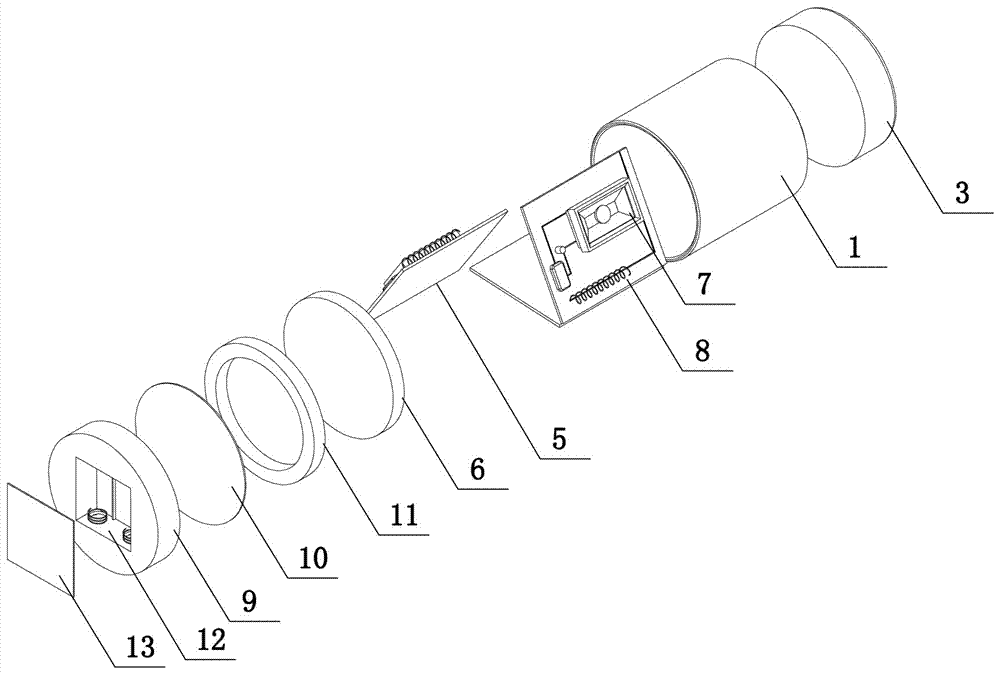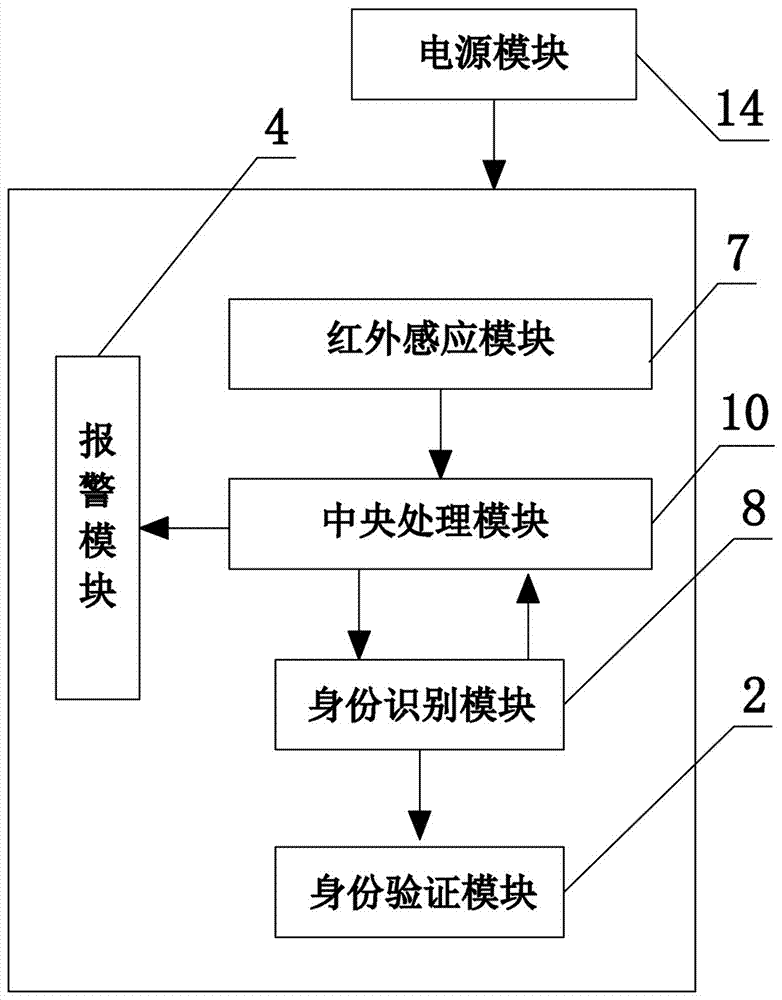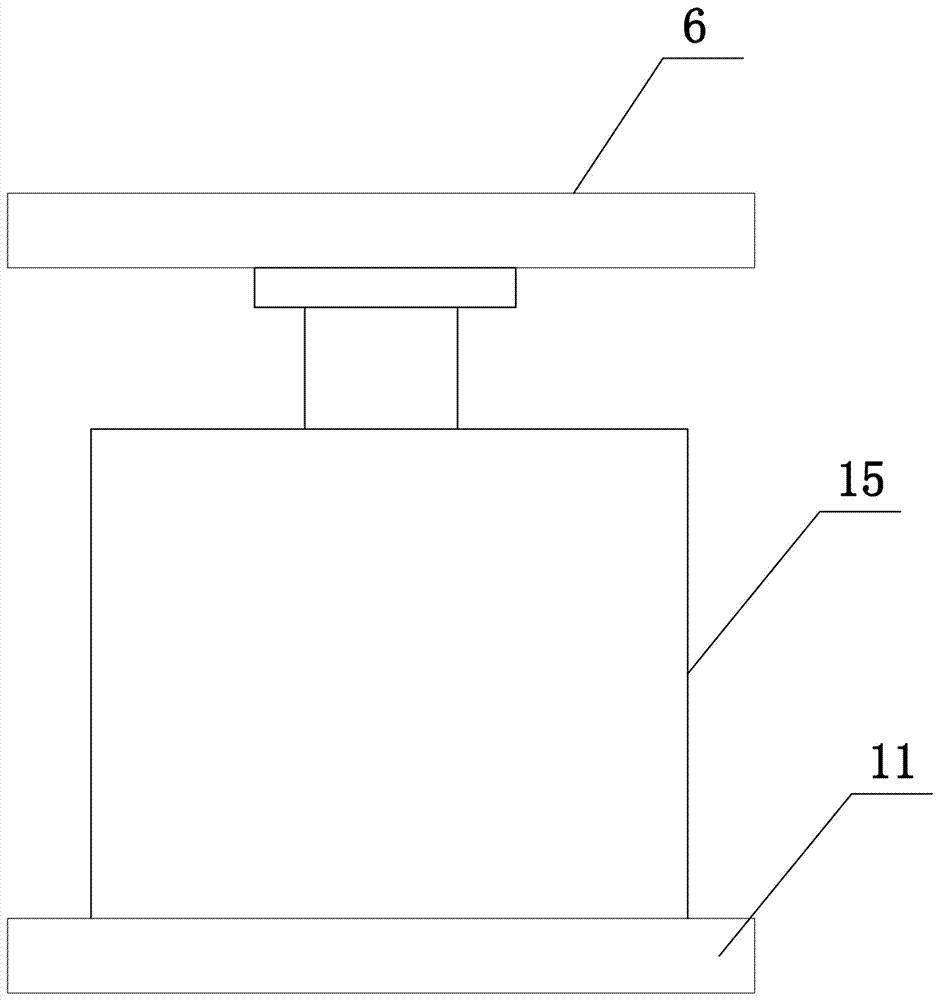Intelligent warning duty equipment
A device and intelligent technology, applied in the direction of alarms, alarms and instruments that rely on interference with short-wavelength radiation, can solve the problems of inability to distinguish between staff and non-staff, not suitable for carrying, unable to adapt to early warning, etc. The effect of protecting safety, reducing floor space and increasing service life
- Summary
- Abstract
- Description
- Claims
- Application Information
AI Technical Summary
Problems solved by technology
Method used
Image
Examples
Embodiment 1
[0035] like figure 1 and figure 2As shown, the present invention includes a mobile carrier (not shown) and an on-duty device shell 1, the mobile carrier adopts a work badge, and an identity verification module 2 is installed on it. The identity verification module 2 in this embodiment adopts an RFID electronic label, and the on-duty device shell 1 is a columnar structure with open ends at both ends, the upper end of the duty device shell 1 is fixedly connected to the fixed alarm device shell 3, an alarm module 4 is arranged in the alarm device shell 3, and the alarm module 4 adopts the voice alarm module or sound and light alarm in the prior art. Module, three positioning plates 5 and a fixed seat 6 are arranged in the casing 1 of the duty device, and the three positioning plates 5 are fixed on the upper end surface of the fixed seat 6, and between the adjacent two of the three positioning plates 5 The included angles are the same, and the outer end face of each positioning ...
Embodiment 2
[0042] The structure of this embodiment is basically the same as that of the first embodiment, the difference is: image 3 and Figure 4 As shown, the upper end face of the annular guard plate 11 is fixedly connected to the drive motor 15, the output shaft of the drive motor 15 is connected to the lower end flange of the fixed seat 6, and a gap is reserved between the fixed seat 6 and the inner wall of the duty device shell 1, and the central processing module The third output terminal of 10 is electrically connected to the input terminal of the drive motor 15 .
[0043] The infrared sensing module and the identity recognition module in this embodiment are driven by the drive motor to rotate 360°. When the identity recognition module does not detect the identity verification module of the infrared subject, the central processing module controls the drive motor to stop rotating.
Embodiment 3
[0045] The structure of this embodiment is basically the same as that of the first embodiment, the difference is: Figure 5 As shown, the identity verification module 2 includes an encoding module 16, a signal processing module 17 and a Zigbee wireless transmission module 18 that are electrically connected in sequence, and the identity recognition module 8 includes a Zigbee wireless receiving module 19, a data analysis calling module 20 and a data storage module that are electrically connected in sequence. module 21. The coding module 16 stores coding information such as the name and job number of the staff member, that is, each mobile carrier has a different code, and the coding information of all mobile carriers is stored in the data storage unit. The verification module 2 sends the coded signal to the identity recognition module 8 through Zigbee wireless communication, and the data analysis unit of the identity recognition module 8 retrieves the coded information of the dat...
PUM
 Login to View More
Login to View More Abstract
Description
Claims
Application Information
 Login to View More
Login to View More - R&D Engineer
- R&D Manager
- IP Professional
- Industry Leading Data Capabilities
- Powerful AI technology
- Patent DNA Extraction
Browse by: Latest US Patents, China's latest patents, Technical Efficacy Thesaurus, Application Domain, Technology Topic, Popular Technical Reports.
© 2024 PatSnap. All rights reserved.Legal|Privacy policy|Modern Slavery Act Transparency Statement|Sitemap|About US| Contact US: help@patsnap.com










